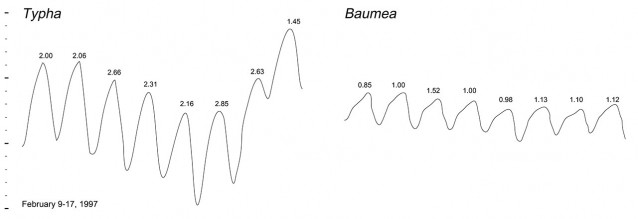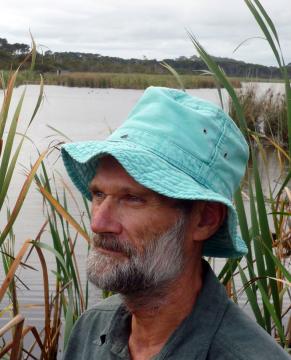Chapter 11: Transpiration
Much of the Perry Lakes basins contain emergent wetland macrophytes, in particular Typha and Baumea. It was important to quantify how much transpiration might introduce errors into the mass balances. High resolution capacitive water level loggers were operated in shallow wells bored into the lake lining clays in a Typha meadow (East Lake) and a Baumea meadow (West Lake). The specific yield (0.024) and the readily available (within first 24 hours) specific yield (0.0069) were measured. The method relies on the fact that groundwater levels below phreatophytes typically fluctuate diurnally in a harmonic form and can be used to provide daily estimates of water uptake by plants.
The Typha data was collected over a full year during which evapotranspiration totalled 383mm compared to 1385mm from adjacent open water as measured by floating Class A pan. In December average daily Typha evapotranspiration was 2.0mm compared to 6.6mm evaporation from adjacent open water. In September (when Typha is dormant) this dropped to just 0.1mm compared to 2.9mm for open water. The Baumea was only monitored for February and March 1997 and showed evapotranspiration rates about half that of Typha.


